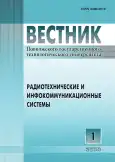Comparative Analysis and Testing of Deep Learning Neural Network Models for Road Sign Recognition
- Авторлар: Kovaleva O.A.1, Deev M.I.1, Kovalev S.V.1, Zabrodsky I.A.1
-
Мекемелер:
- Tambov State University named after G.R. Derzhavin
- Шығарылым: № 1 (2024)
- Беттер: 60-69
- Бөлім: Computer engineering and informatics
- URL: https://journal-vniispk.ru/2306-2819/article/view/276000
- DOI: https://doi.org/10.25686/2306-2819.2024.1.60
- EDN: https://elibrary.ru/OWLGIP
- ID: 276000
Дәйексөз келтіру
Толық мәтін
Аннотация
Introduction. The main problem of neural network models in the form of embedded systems is the limited computing resources, which does not allow obtaining the output result in the shortest possible time. Minimizing the time spent on model training also remains a priority. Therefore, when comparing the accuracy of output data and the learning speed of neural network models, the main attention should be paid to different image sizes. The goal of the work is to identify a model that gives the most accurate results after training, has high performance and allows you to produce the most extensive output data with minimal input. The novelty of the study lies in the fact that it was carried out using a comparative analysis of five neural network models on one framework with input data sizes of 32 × 32,48 × 48 and 64 × 64, the combination of which has not been studied.
Description of research objects. Five of the most common models were selected as objects of comparative analysis: DenseNet, GoogLeNet, LeNet, MobileNet and ResNet50. The study uses the available TSRD dataset, which includes 6164 images of road signs containing 58 categories. The images were combined into two sub-databases, one of which is training, and the second is test. There are 4170 image files in the training database, and 1994 in the testing database. Each image contains an annotation with information about the four coordinates of the sign and its category. Their size varies from 26 × 28 to 491 × 402 pixels. Tensor-Flow framework was also used to run all neural network models. The advantage of the models is the accuracy of the output data with a relatively small number of inputs.
Conclusion. According to the results of the study, the following leaders in output accuracy can be identified: ResNet50 and MobileNet. In terms of learning speed, MobileNet takes first place with an average of 169 seconds on the GPU, ResNet50 takes second place with a difference of 465 seconds in terms of learning speed on GPU. MobileNet data accuracy showed high results of 94.5% on CPU and 94.5% on GPU. In terms of accuracy and training time, the LeNet and GoogleNet models showed similar performance and accuracy. The DenseNet model showed the most negative results in its accuracy and performance. Changing the size of the input data had little effect on the output accuracy and scalability of the training environment. Due to the fact that the data sizes may not affect the accuracy of the result, when using the TSRD data set, it is proposed to use 32 × 32 dimensions as input data sizes that allow you to find road signs. This solution is more economical and does not affect the accuracy of the output data. The experiments conducted during the study showed that the accuracy of ResNet50 is similar to the accuracy of MobilNet. This proves that for the definition of road signs, deeper models with a longer learning time are not in every case preferable to small ones.
Негізгі сөздер
Толық мәтін
Авторлар туралы
Olga Kovaleva
Tambov State University named after G.R. Derzhavin
Email: deevmih3@yandex.ru
ORCID iD: 0000-0003-0735-6205
SPIN-код: 2984-0570
Doctor of Engineering Sciences, Professor of the Department of Mathematical Modeling and Information Technologies
Ресей, 33, Internatsionalnaya st., Tambov, 392000Mikhail Deev
Tambov State University named after G.R. Derzhavin
Хат алмасуға жауапты Автор.
Email: deevmih3@yandex.ru
ORCID iD: 0009-0008-1170-7251
PhD student
Ресей, 33, Internatsionalnaya st., Tambov, 392000Sergey Kovalev
Tambov State University named after G.R. Derzhavin
Email: deevmih3@yandex.ru
ORCID iD: 0000-0002-5961-7561
SPIN-код: 6685-7573
Doctor of Engineering Sciences, Professor of the Department of Mathematical Modeling and Information Technologies
Ресей, 33, Internatsionalnaya st., Tambov, 392000Ilya Zabrodsky
Tambov State University named after G.R. Derzhavin
Email: deevmih3@yandex.ru
ORCID iD: 0009-0000-5538-1400
SPIN-код: 2896-8971
Senior Lecturer of the Department of Mathematical Modeling and Information Technologies
Ресей, 33, Internatsionalnaya st., Tambov, 392000Әдебиет тізімі
- Tikhonov AA. Big data and deep machine learning in artificial neural networks. Science and Education Today. 2018;(6):35–38. (In Russ.).
- Petrov SP. Convolutional neural network for car license plate character recognition. System Analysis in Science and Education. 2013;(3):66–73. (In Russ.).
- Sozykin AV. Review of methods for training deep neural networks. Bulletin Of SUSU. Series: Computational Mathematics and Computer Science. 2017;6(3):28–59. (In Russ.).
- Arjun S. Creating DenseNet 121 with Tensor-Flow. Towards Data Science. Jule 2020. Available from::https://towardsdatascience.com/creating-densenet-121-with-tensorflow-edbc08a956d8 (accessed: 13.06.2023).
- Suvaditya M. The Annotated ResNet-50. Towards Data Science. August 2022. Available from: https://towardsdatascience.com/the-annotated-resnet-50-a6c536034758 (accessed: 23.06.2023).
- Richmond A. Deep Learning: GoogLeNet Ex-plained. Towards Data Science. December 2020. Available from: https://towardsdatascience.com/deep-learning-googlenet-explained-de8861c82765 (accessed: 17.06.2023).
- Kozlov S. Evolution of neural networks for image recognition in Google: GoogLe NeT. Available from: https://habr.com/ru/articles/301084. 2016 (accessed: 26.06.2023).
- Rizwan M. LeNet-5 - A Classic CNN Architecture. Data Science Central. October 2018. Available from: https://www.datasciencecentral.com/lenet-5-a-classic-cnn-architecture/ (accessed: 22.06.2023).
- Howard AG et al. Mobilenets: Efficient convolutional neural networks for mobile vision applications. 2017. Available from: https://arxiv.org/pdf/1704.04861.pdf. (accessed: 26.06.2023).
- Panchenko D. MobileNet: smaller, faster, more accurate. Available from: https://habr.com/-ru/articles/352804/ (accessed: 26.06.2023).
Қосымша файлдар

















